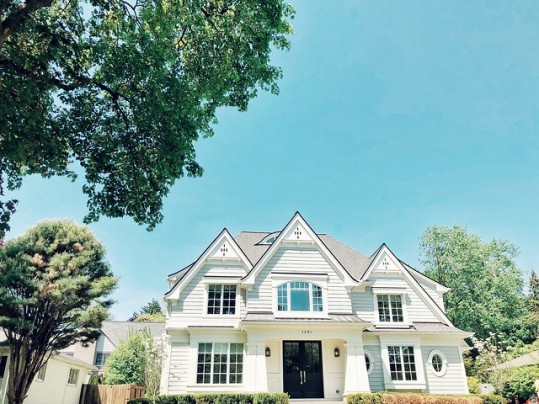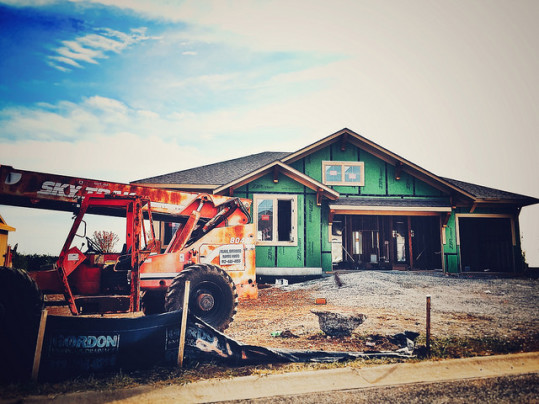Fannie Mae’s Economic and Strategic Research Group releases a monthly forecast detailing what lies ahead for the economy and housing market. And though their most recent release says the overall economy will slow this year, their outlook for the housing market is encouraging for potential home buyers and sellers. That’s because the group sees stability ahead. Doug Duncan, Fannie Mae’s chief economist, says there are a number of factors that should make market conditions more favorable this year. “On housing, the recent dip in mortgage rates to their lowest level in over a year – combined with wage gains and home price deceleration – supports our contention that home sales will stabilize in 2019,” Duncan said. “The greatest impediment to both sales and affordability continues to be on the supply side, as new inventory, particularly among existing homes, is being met quickly by strong demand – as evidenced by the already thin months’ supply hitting a new one-year low.” In other words, conditions will be less volatile than they were last year but ultimately depend on how many homes are available for sale. If new home construction and listings can keep up with demand, it’ll help keep prices steady and the market manageable for buyers. More here.
Archive for April 2019
Mortgage Rate Increase Doesn’t Deter Home Buyers
According to the Mortgage Bankers Association’s Weekly Applications Survey, average mortgage rates rose last week but the increase didn’t stop home buyers. In fact, demand for purchase loan applications rose 1 percent and reached their highest level in 9 years. Requests for loans to buy homes are now 7 percent higher than at the same time last year. Despite the improvement, however, overall mortgage application demand was down from the week before, as refinance activity was slowed by higher rates. Joel Kan, MBA’s associate vice president of economic and industry forecasting, said the decline is no surprise. “With mortgage rates up for the second week in a row, it’s no surprise that refinancings slid 8 percent, and average loan sizes dropped back closer to normal levels,” Kan said. “Purchase activity remained strong and increased slightly, reaching its highest level since 2010. The spring buying season continues to be robust.” The MBA’s weekly survey has been conducted since 1990 and covers 75 percent of all retail residential mortgage applications. More here.
Builders Say Demand Is High But Costs Are Rising
Home builders are on the frontline of the housing market. Their business depends on knowing what buyers want and when they want it. That’s why the National Association of Home Builders tracks builder confidence in the market for newly built homes. When builders are optimistic about buyer demand, they build more homes, which helps balance the market and makes conditions better for all home buyers. The results of the NAHB’s most recent survey shows builders are confident in the market and reporting solid demand. In fact, on a scale where any number above 50 indicates more builders view conditions as good than poor, April’s Housing Market Index scored a 63. But, despite the strong showing, Robert Dietz, NAHB’s chief economist, says a shortage of construction workers and buildable lots is causing housing costs to rise. “Ongoing job growth, favorable demographics, and a low-interest rate environment will help to modestly spark sales growth in the near term,” Dietz said. “However, supply-side headwinds that are putting upward pressure on housing costs will limit more robust growth in the housing market.” More here.
Home Shoppers Ready To Take On Renovations
In a perfect world, we’d all be able to buy a home that fulfills our wish list, is in great condition, and already has our preferred fixtures, features, and finishes. Of course, that isn’t the way things work. Buying a house requires compromise and, in some cases, a good strategy for how to fix the things you don’t like about a home you’re otherwise crazy about. Fortunately, if recent data is any indication, today’s home shoppers understand this and are realistic about their chances of finding the perfect home. For example, according to a new survey, nearly 60 percent of respondents said they’d consider a home that needs renovating and would be willing to spend more than $20,000 to get the job done. There are a number of reasons for the increasing number of home shoppers looking for a fixer-upper. For one, the limited number of entry-level homes for sale means buyers have to consider homes they may not have if they had more options. But beyond that, the popularity of home renovation TV shows and the fact that those who are considering a fixer-upper believe they’ll see a return on their investment also contribute to buyers’ willingness to take on a project. More here.
Millennial Borrowers Close Loans In 44 Days
After finding a house to buy and having your offer accepted, the home buying process really kicks into gear. There are several steps that have to be cleared before a pending sale is completed and your loan has closed. For example, this is the time when the home will be inspected and appraised. It is also the period during which the financial side of the transaction will be finalized. This takes time, as anyone who’s been through the process before knows. But what about first-time home buyers? How long should they expect between making an offer and getting their keys? Well, according to Ellie Mae’s Millennial Tracker, the average time it took millennial borrowers to close conventional purchase loans in February was 44 days, which was slightly higher than the previous month. Joe Tyrrell, executive vice president of strategy and technology for Ellie Mae, says time to close is increasing as the share of home purchase loans grows. “The percentage of purchase loans is on the rise with millennials continuing to enter the home buying market for their first or maybe even second purchase,” Tyrrell said. “The increase in days-to-close we saw in February is relative to the percentage increase in purchases versus refinances, as purchases typically take longer to close.” More here.
Number Of Homes For Sale Shows Improvement
There are many ways to gauge the housing market. You can follow home prices and mortgage rates, buyer traffic and sales, new home construction, or access to credit. But, if you’re a potential home buyer or seller, there may be no better indicator than inventory. That’s because, it’s an easy way to determine whether or not the market favors buyer or sellers. When there are too few homes for sale, buyers have to compete for available homes, which leads to higher home prices. When there are too many homes for sale, the pressure’s on sellers, who have to make sure their home is attractively priced. Typically, inventory is measured by how long it would take to sell the homes currently for sale. A six-month supply is considered a balanced market. Recently, inventory has been low. But new data shows a dramatic improvement. For example, one analysis found that the number of metropolitan areas with less than three months of available inventory has fallen to 3.1 percent from 12.6 percent last year. It also found that two-thirds of metros now have between four and eight months of remaining inventory, which is considered healthy. Overall, the numbers indicate that the housing market is far better balanced than it was during last year’s sales season. More here.
Loans To Buy Homes Up 13 Percent Over Last Year
According to the Mortgage Bankers Association’s Weekly Applications Survey, the number of Americans requesting applications for loans to buy homes is now 13 percent higher than it was at the same time last year. The improvement comes during a week when average mortgage rates increased. In fact, rates were up across all loan categories, including 30-year fixed-rate loans with both conforming and jumbo balances, loans backed by the Federal Housing Administration, and 15-year fixed-rate loans. Mike Fratantoni, MBA’s senior vice president and chief economist, says though rates increased, they’re still lower than they were at the end of last year. “Mortgage rates inched back up last week, but remain substantially lower than they were in the second half of last year,” Fratantoni said. “As quickly as refinance activity increased in recent weeks, it backed down again in response to the rise in rates. However, this spring’s lower borrowing costs, coupled with the strong job market, continue to push purchase application volume much higher.” The MBA’s weekly survey has been conducted since 1990 and covers 75 percent of all retail residential mortgage applications. More here.







